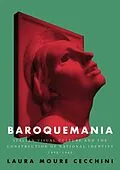Baroquemania explores the intersections of art, architecture and criticism to show how reimagining the Baroque helped craft a distinctively Italian approach to modern art. Offering a bold reassessment of post-unification visual culture, the book examines a wide variety of media and ideologically charged discourses on the Baroque, both inside and outside the academy. Key episodes in the modern afterlife of the Baroque are addressed, notably the Decadentist interpretation of Gianlorenzo Bernini, the 1911 universal fairs in Turin and Rome, Roberto Longhi's historically grounded view of Futurism, architectural projects in Fascist Rome and the interwar reception of Adolfo Wildt and Lucio Fontana's sculpture. Featuring a wealth of visual materials, Baroquemania offers a fresh look at a central aspect of Italy's modern art.
Autorentext
Laura Moure Cecchini is Assistant Professor of Art History at Colgate University
Klappentext
This book radically reconceptualises Italian post-unification visual culture by exploring an element that has, until now, been systematically ignored: its fraught entanglement with the Baroque. Evoking a glorious past the Roman Empire, the Middle Ages, the Renaissance played a key role in constructing a common Italian identity following the country's unification in 1861. But the Baroque was considered too extravagant, kitsch, and whimsical to serve the aggressive nation-building impulse that led to Fascism. Baroquemania sets out to redress this narrative. It interrogates a diverse range of media, from paintings, sculptures, and buildings to commercial illustrations, postcards, posters, pageants, photographs, films, and exhibitions. Situating Italy within European and Latin American reimaginings of the Baroque, the book proves how widespread use (and misuse) of the style was integral to articulating Italians' ambivalent relationships with modernity and tradition. Unravelling the Baroque's protean afterlife in the work and writings of Umberto Boccioni, Giorgio de Chirico, Armando Brasini, Adolfo Wildt, and Lucio Fontana, among others, this book reveals the Baroque's role in pioneering a distinctively Italian approach to modern art, one that was neither anti-modernist nor fully committed to avant-garde values. By examining how the Baroque haunted Italian visual culture, Baroquemania offers a fresh look at an essential aspect of Italy's development into a modern nation.
Inhalt
Introduction 1 Decadent Seicento: the emergence of the Baroque in the Italian fin de siècle 2 The Baroque's revenge: the 1911 jubilee exhibitions and the search for an Italian style 3 Baroque Futurism: Roberto Longhi, seventeenth-century art and the Italian avant-garde 4 Classical Baroque: the Seicento and the return-to-order 5 Baroque memories in the architecture of interwar Rome 6 Form and formlessness: the reimagination of Baroque sculpture during Fascism Conclusions Index
